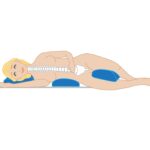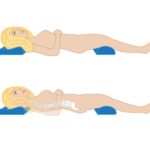EXERCISE! Or rather, how can I exercise when I am in pain?
 Exercise is on the prescription list for EVERY physical or mental health condition.
Exercise is on the prescription list for EVERY physical or mental health condition.
And research has shown that exercise does improve our emotional and our physical health.
Although there are many exercise programs to choose from, there are few if any realistic guidelines provided about how to decide which program would be best for you – when you have a persistent pain problem. Each person’s pain/problems are unique, so just giving the direction to EXERCISE is hardly sufficient.
The videos posted on the Resources page take you step- by-step through this process of moving (exercising), without “going to the ouch.”
The videos may appear simple, but this information is appropriate for the person with a persistent pain problem and for anyone else — including the athlete or as the person who exercises and/or engages in sports regularly.
Anyone can hurt themselves – from an enthusiastic golf swing, a twisted ankle, a bad tennis shot. So, the acutely injured part of the body will recover faster if these steps are also followed . (When athletes are side-lined because of injury or concussion, rest and rehab is part of their recovery.)
The GOAL is to be able to participate in a general exercise program that YOU will modify or change – because you are now paying attention to what YOUR own body is telling you to do (even if the instructor says something different).
FOUR STEPS:
It may take longer than you would like to progress your exercise program, since you are also learning to pay attention, modify, change, or adjust the range of motion, the length of time you are holding the exercise, and any progression using weights.
- START FROM A COMFORTABLE POSITION: A position where you do not feel (or hardly feel) any “ouch.” It is likely you will be lying down (not necessarily on the floor).
You are trying to find a position where the spine (and all its attached muscles) are supported and therefore as relaxed as possible. You may have to place your arms and legs on different heights of pillows/supports and of course, you need a pillow to support the cervical lordosis (the C-curve) of your neck.
Give yourself 30-60 seconds to ‘sink’ into the pillows (while you quietly say ouch.ouch.ouch) … It takes time for muscles to let go and relax if they have been tight or in spasm for a long time.
- STRETCH: From this comfortable position, move (stretch) in one direction and ensure that you can return to the starting position without discomfort.
If you are moving your arm/shoulder, keep your arm on the floor/ bed surface while you move. As soon as you lift your arm, you are adding gravity (a weight) to the exercise.
It is difficult to stretch our legs and hips without doing any type of lifting.
Try moving your leg to the side while it is on the floor.
Try to bend your knees and just move your knee in and out (hip movement) to begin to understand that feeling of moving without a weight.
Move in one direction and ensure you can return to the starting position.
If you feel any discomfort, limit the range of movement and do it again.
Only move in a pain-free range. Rest a few seconds between exercises and repeat 3-5 times.
 Do not be concerned if 1 side of your body wants to do more repetitions than the other.
Do not be concerned if 1 side of your body wants to do more repetitions than the other.
Monitor the rest of your body as you focus on the exercise and ensure that you are NOT holding your breath or clenching your teeth and that you ONLY feel the muscle work in the part of the body you are moving.
This is NOT as easy as it looks.
- STRENGTHEN: Adding repetitions and then changing into a position where gravity is also a weight (sitting) will make the exercise more challenging.
Ensure that you can ‘hold’ the exercise for a minimum of 6 seconds, without discomfort. If there is any discomfort, reduce the range and the time you are ‘holding.’
Do not progress into a strengthening program until you have good functional range of movement for someone your age and general activity level.
Recover by relaxing the muscles completely between repetitions.
Your leg is already a ‘weight’ (20% of our body weight is in each leg). So, lifting your leg against gravity in a lying down position’ can be a very effective and challenging strengthening exercise.
Increase the number of repetitions, the number of seconds you are holding and over time, you can start adding a weight (a tin of peas is a good first weight). Follow the same process.
Remember that each side of your body may have different ‘limitations’.
At the end of your exercise routine, you want to feel better, tired, and maybe a little sore – but a good soreness. If you have any discomfort longer than 20-30 minutes after doing your exercises, review your routine and change it accordingly by reducing the range or number of repetitions, etc.
Use heat, take a hot shower or bath, relax for 10-15 minutes after your exercise routine.
Start a new exercise routine in a short time frame – 10 minutes is a good start. Build up that routine slowly. Add another 10 minutes later in the day- IF that is what your body wants to do.
By exercising this way, you are becoming more aware of what is happening in different parts of your body and what you can do to gradually get stronger.
Over time, you can change the position in which you are doing your exercise from lying to sitting to standing. It may take longer than you think to do this – do not be concerned.
ENDURANCE: We are not going to talk about building endurance (huffing and puffing). It is best to work with a knowledgeable health provider or exercise person when you feel you have good control of what is happening in your body.
UNCOVERING THE OLD PAIN/ THE OLD SYMPTOMS: Do not worry!
If you have not moved or stretched parts of your body efficiently for a long time, it is likely that almost every exercise will feel like an ‘ouch’ initially.
And, if you are a person with a diagnosed spinal problem, much of the pain can be caused secondarily by the deep muscles between the vertebral segments and alongside the spine. These muscles have been tight for a long time, protecting the ouchy nerves and joints. As a result of this tightness, the blood supply to these muscles has been reduced. And that is why you feel better using heat, getting into a comfortable position, having a gentle massage, etc. You are bringing more oxygen, carried in the blood, to these painful areas.
Take it even slower than you thought you would have to: stop and start, change position, use heat, keep a chart, and do not worry if you start feeling ‘old’ pain sensations. You are not getting worse. It is important to learn how to move from the spinal area outwards – from the deeper muscles to those right under our skin – in order to build strength.
EXERCISING SAFELY AFTER COVID:
We are only beginning to understand the ramifications of exercising after COVID. It is likely that some people with prolonged symptoms of COVID might develop what is now being referred to as post-acute or long COVID. Start back with caution, pacing yourself, ensuring that you recover completely after your modified and shortened routine. More information will be posted as specific guidelines are developed. It is important to consult with your health practitioner FIRST and before you start back into exercising regularly if you have any questions or concerns.
Slow and steady- pay attention- modify as needed- and remember, the tortoise won the race!



